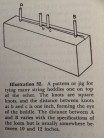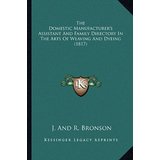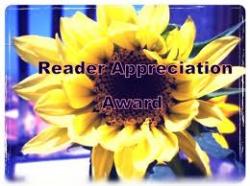I enjoy roaming the aisles of used book stores. Over the years I have found some amazing  books for very little money. Recently I came across a 1956 edition of A Handweaver’s Workbook by Heather G. Thorpe (originally published 1936, reissued in 1974). Not surprising given its age, the book is hardbound, and the pages are printed on heavy acid-free pages. It is also in perfect condition, nary a pencil mark! What a find!
books for very little money. Recently I came across a 1956 edition of A Handweaver’s Workbook by Heather G. Thorpe (originally published 1936, reissued in 1974). Not surprising given its age, the book is hardbound, and the pages are printed on heavy acid-free pages. It is also in perfect condition, nary a pencil mark! What a find!
Browsing through it, I was impressed by its thorough yet not overwhelming approach to introducing weaving. I learned some interesting facts I’ve not seen newer weaving survey books or learned in a weaving class.
Did you know (I didn’t!) that …
 There are different names for crosses on warps made withe a paddle dependent upon their position: The first cross at the end of a warp is called a porrey cross; the second cross is called a portee cross.
There are different names for crosses on warps made withe a paddle dependent upon their position: The first cross at the end of a warp is called a porrey cross; the second cross is called a portee cross.
A “reed” is called a reed because in “olden times … reeds were … actually made with flat reed strips for partitions and the with twin wound between them to keep them spaced apart.”
“Tromping” is a “dialectic variant of the verb to treadle” used in printed materials to avoid confusion “because of the similarity in print of the words treadling and threading.” (Thorpe notes that it “is a visual aid only and not intended necessarily that you use it in your speech.”)
 You can easily tie your own string heddles using a homemade “jig” made from 4 pegs and a piece of wood? (This is so much easier than the way I’ve done it!
You can easily tie your own string heddles using a homemade “jig” made from 4 pegs and a piece of wood? (This is so much easier than the way I’ve done it!
The crackle weave originated in Jämtland (Sweden’s second largest province), known there as Jämtlandsväv. It was renamed “crackle” by Mrs. Mary Meigs Atwater (1878-1956, “the grand dame and grand mother of the  revival of handweaving” in the US; pic source) who thought the pattern looked like crackle in certain pottery glazes and was worried that English speakers wouldn’t be able to pronounce its name.
revival of handweaving” in the US; pic source) who thought the pattern looked like crackle in certain pottery glazes and was worried that English speakers wouldn’t be able to pronounce its name.
The self same Mrs. Atwater rediscovered how the “summer and winter” weaving structure was woven. According to Thorpe, “[w]ith the coming of machine-made textiles, weaving in the home died out as we know, and this was one of the first weaves to be forgotten.” (Brava for Mrs. Atwater! Click here to read Helena, Montana’s Independent Record‘s 2003 article about Mrs. Atwater.)
 The Bronson weave was named after the two brothers, J. & R. Bronson, who in 1817 brought the structure to the attention of weavers in The Domestic Manufacturer’s Assistant.
The Bronson weave was named after the two brothers, J. & R. Bronson, who in 1817 brought the structure to the attention of weavers in The Domestic Manufacturer’s Assistant.
Have you found fiber art related treasures in second hand stores and bookshops?








Pingback: UA & Grand Dames of Weaving | The Sweaty Knitter, Weaver and Devotee of Other Fiber Arts
I love rooting through second hand stores … sometimes one stumbles across amazing finds!
LikeLiked by 1 person
Reblogged this on StringThings Winnipeg and commented:
S you Winnipegger’s may know, Wolsley’s Neighbourhood Cafe is closed (temporarily I am POSITIVE). I encourage action! Anyway, I just read this wonderful post about finding fibre-love treasure in second-hand bookstores ad thought to share it with you.
Two of the best finds I ever made at the cafe were ‘Plain and Fancy: American Women and Their Needlework, 1700-1850’ by Susan Burrows Swan (found last week!) and the ‘Woman’s Day Book of American Needlework’, by Rose Wilder Lane. (Yes, Laura’s daughter!) It still had it’s companion box of patterns too!
Have you made any amazing finds second-hand?
A good second-hand book store is a pearl beyond price.:-)
LikeLike
I have a coffee shop/second-hand bookstore 2 blocks from my place where I have found many a treasure.
Two of the best were Plain and Fancy: American Women and Their Needlework, 1700-1850 by Susan Burrows Swan (found last week!) and the Woman’s Day Book of American Needlework, by Rose Wilder Lane. (Yes, Laura\s daughter!) It still had it’s companion box of patterns too!
A good second-hand book store is a pearl beyond price. 🙂
LikeLike
Oh, what a find! (And thank you for the nomination!)
LikeLiked by 1 person
I remember once, years ago, finding a volume of Barbara Walker’s A Treasury of Knitting Patterns at a secondhand book stall at a flea market. They actually had several knitting and crafting books. It was pretty cool!
I’ve nominated you for the Creative Blogger Award:) See details here: https://alexandknits.wordpress.com/2016/07/23/creative-blogger-award-nomination/
LikeLike
Is it possible to find out how to do that? I love the thought of using techniques which have been ‘lost’ or are in the process of being lost. So important to keep them in use! We have lost so much in this modern world of ours!!!!
LikeLike
We’ll be moving to a large town in a few months … I already know I’ll be missing a good burrito shop!
LikeLike
Yes, the patterns create opposites of each other on each side.
LikeLike
Probably a combination of both.
LikeLike
Yes, and I always feel so self-righteously thrifty!
LikeLiked by 1 person
I like Norwegian mid-century knitting patterns, but the American versions confuse me! 🙂
LikeLiked by 1 person
Very nice! I haunt used bookstores for knitting books, and have found both new and old books, as well as some humorous mid century knitting pattern booklets!
LikeLike
Those kinds of books are the best find!
LikeLike
That is ‘funny’, yes I do have the book but these are all words that Norman Kennedy uses. He ‘grew up’ with them and of course uses them to ‘confuse’ or educate us……..not sure which 🙂
LikeLike
Reblogged this on Mulch Needed.
LikeLike
Great find! Summer and winter weaves? Sounds very interesting!!!
LikeLike
Reblogged this on Janet’s thread.
LikeLike
A treasure indeed. Some of the few things I miss about living near a city is 1: the option of various ethnic foods other than grade C pizza and 2: interesting second hand shops. To me the kind of old book shop where you find treasures like this are quaint things which only exist in movies. Sure, old books are sold in small amounts here and there, but it’s crap.
LikeLike